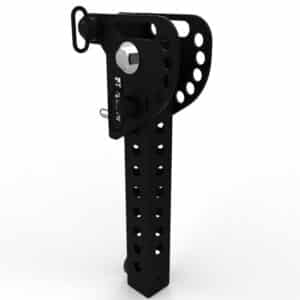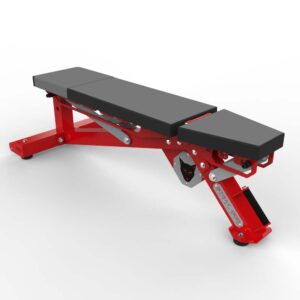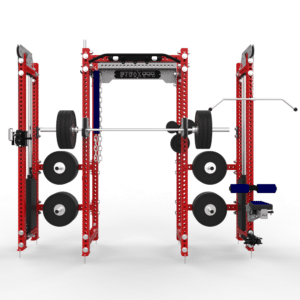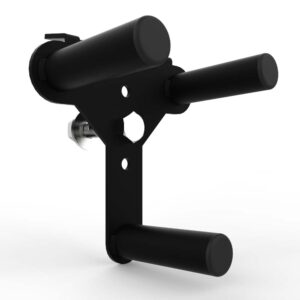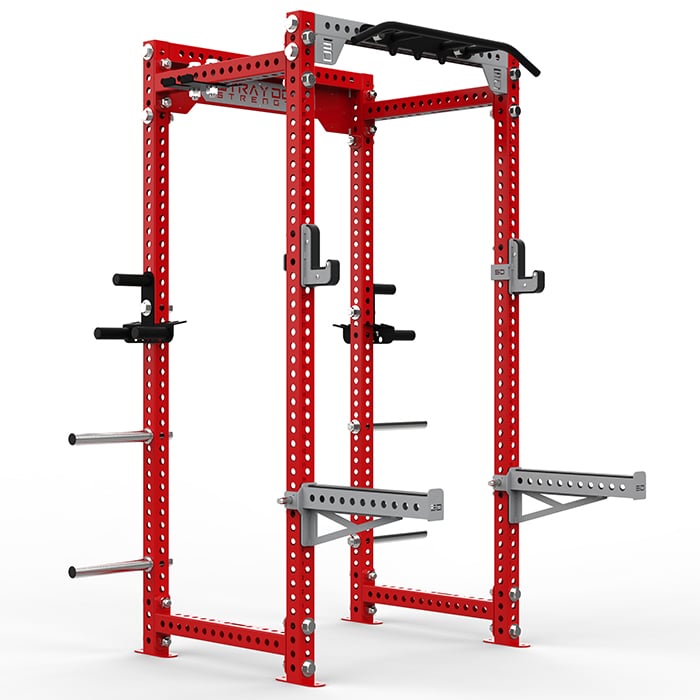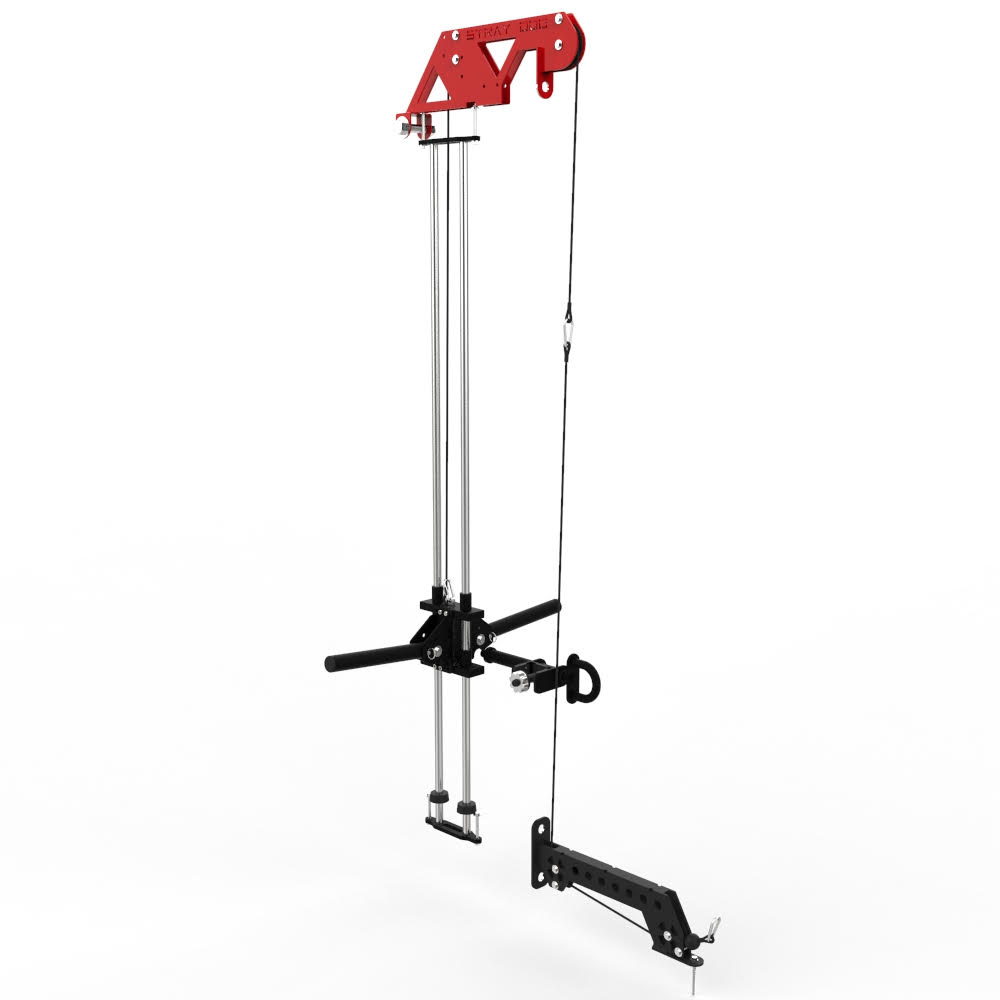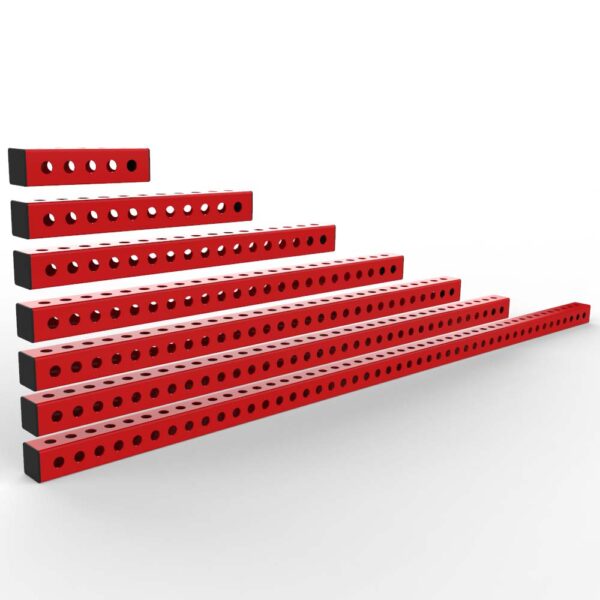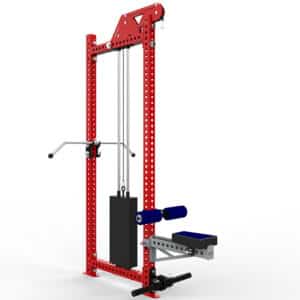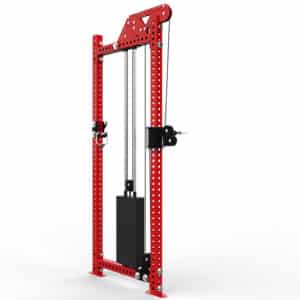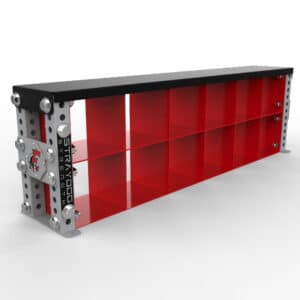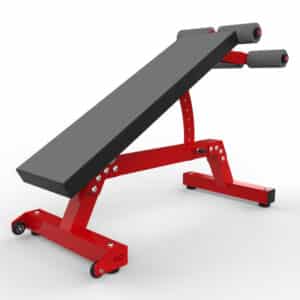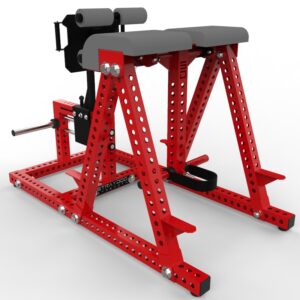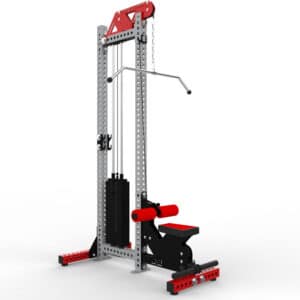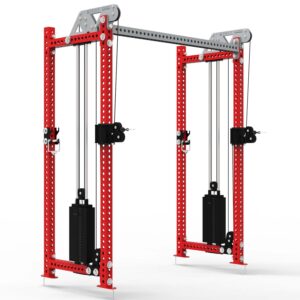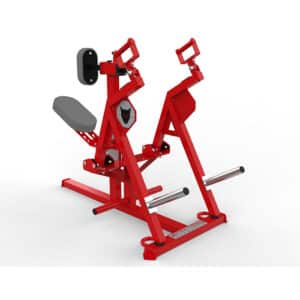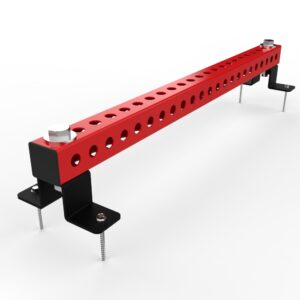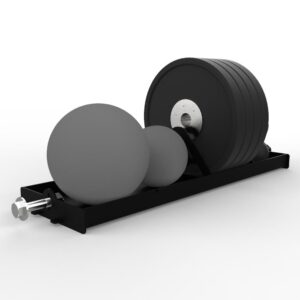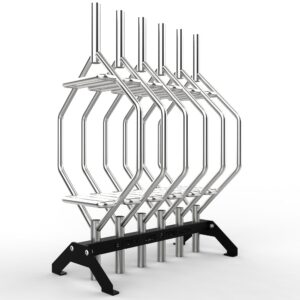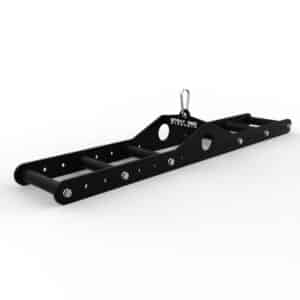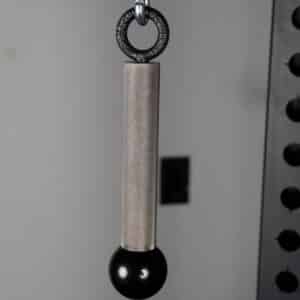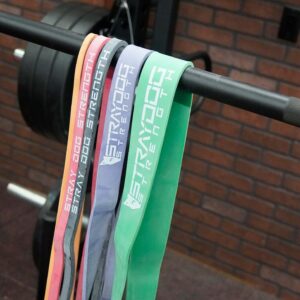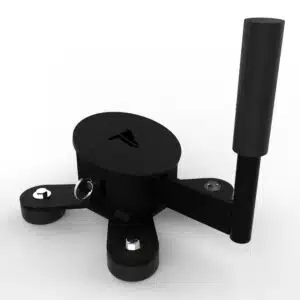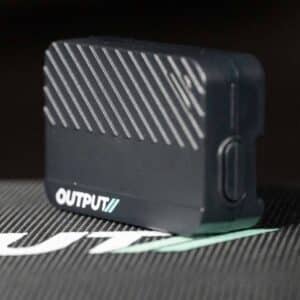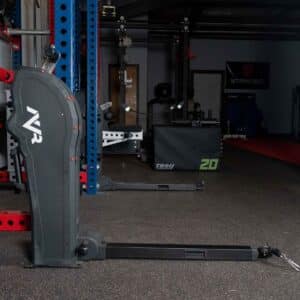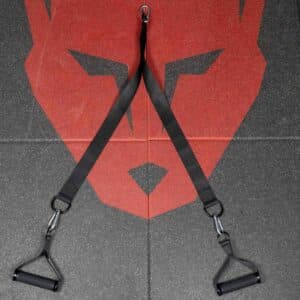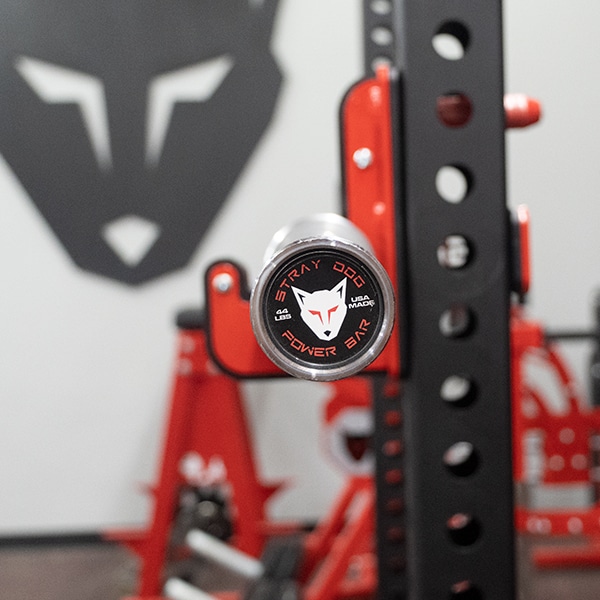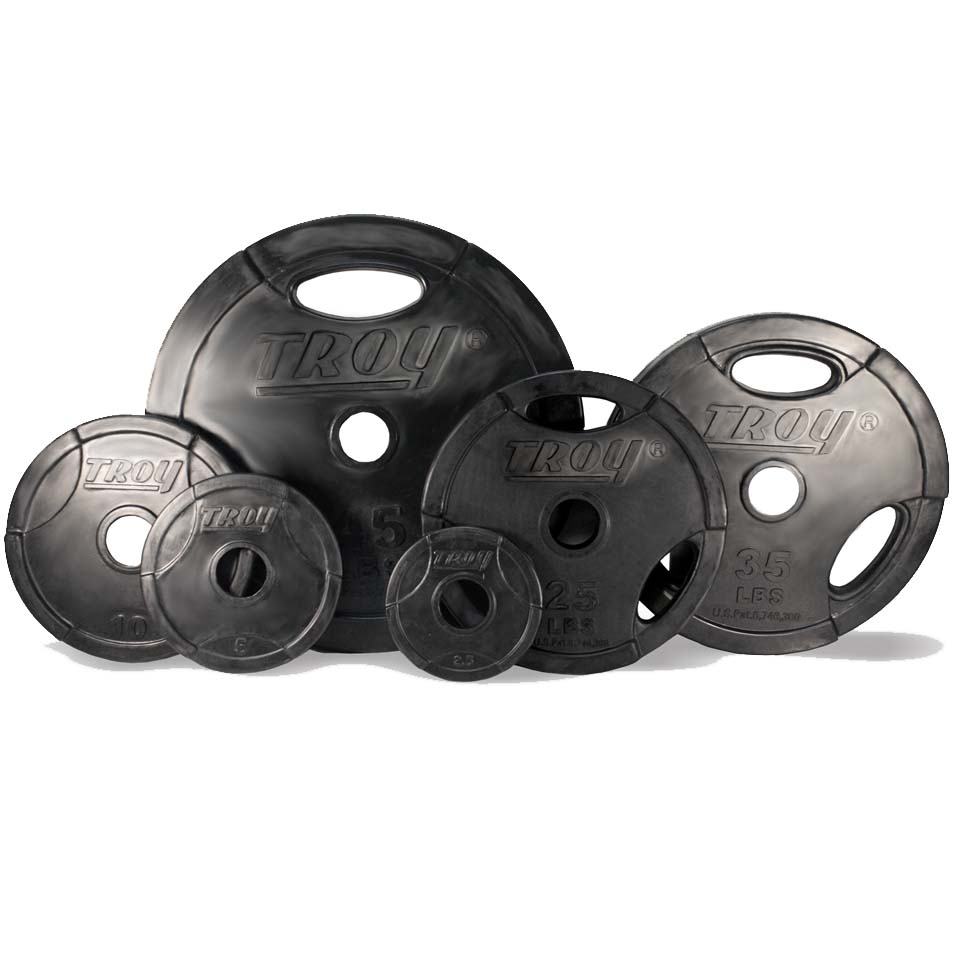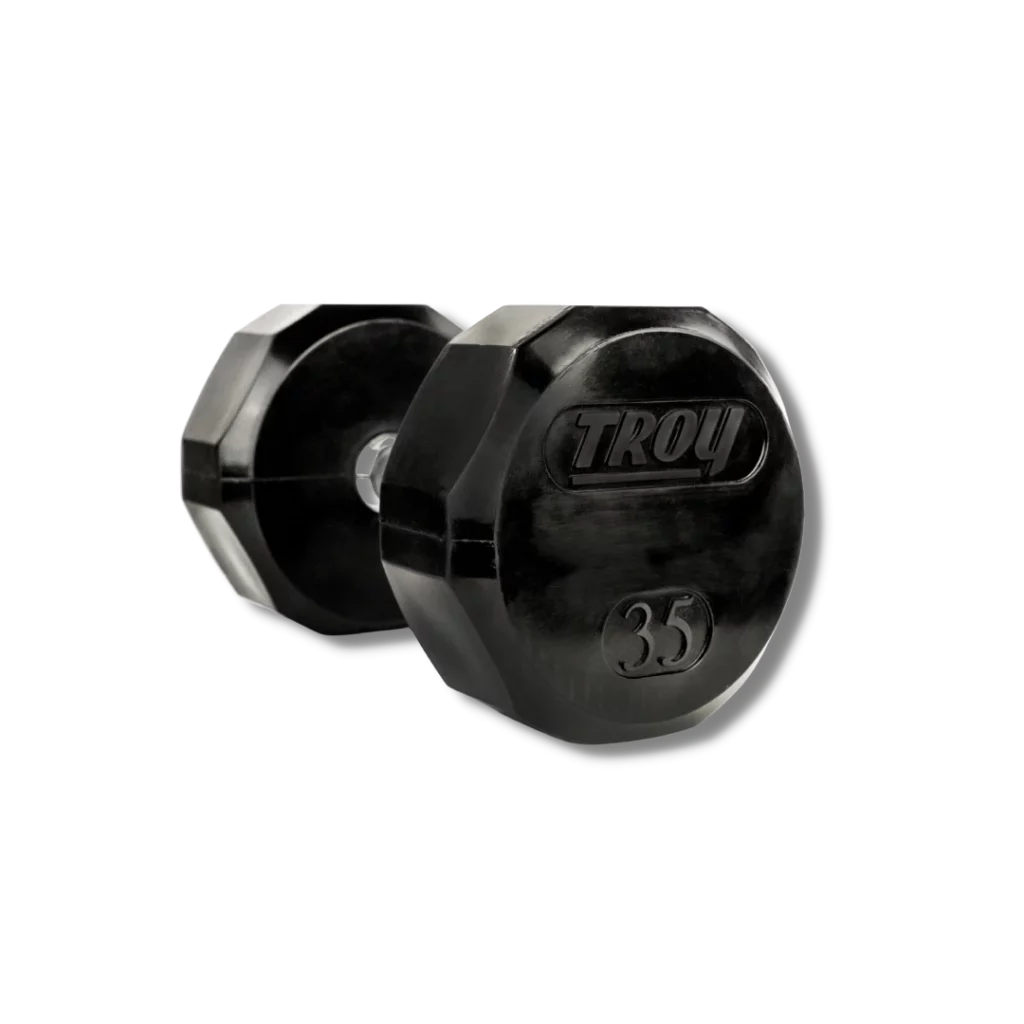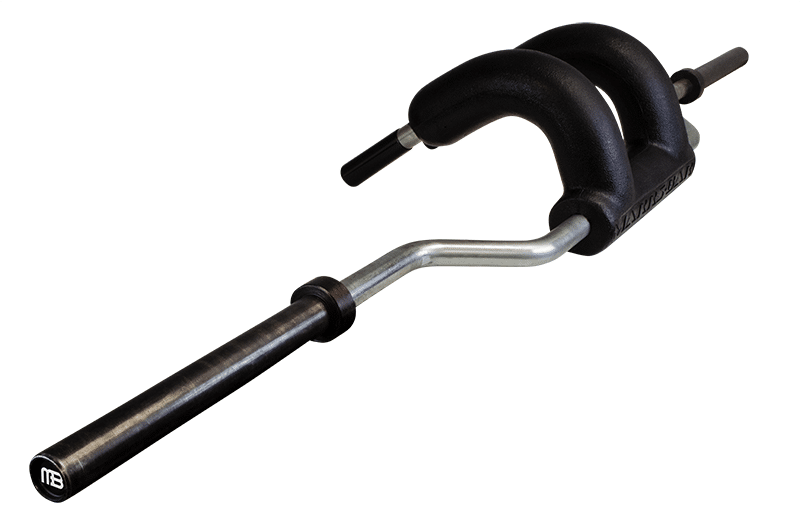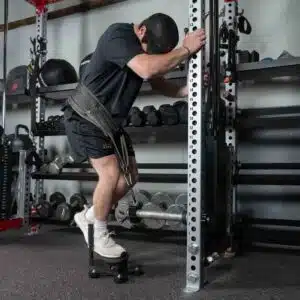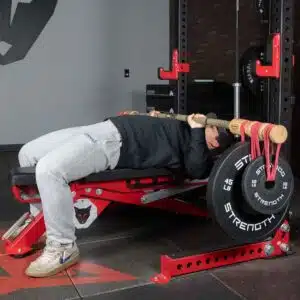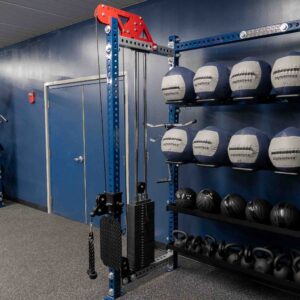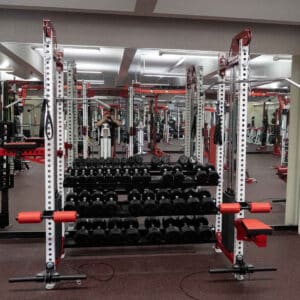Summary of interview
The Marrs Bar was invented by Zac Marrs in 2003 who owns Olympic Iron Gym(and now Marrs Bar) in Kansas, after an injury Zac lost the ability to do his beloved “straight bar low bar squats”. Zac did not quit his passion of squatting so he went to the drawing board, sacrificing a Safety Squat bar from his gym to be cut up to create the original prototype. Zac had no training as an engineer, just a non formal degree from Meathead university in Squatting, so he went to a local welder he knew to help him create the bar he dreamed up.
The process was not an easy one that came by trial and error, Zac would wait for the steel to not be piping hot throw the bar on his back and squat to see if the physics felt right, it took many tries but I think it is safe to say the production version of the Marrs bar has some of the best squat physics of any squat bar on the market.
It was not until 2017 that Zac realized that he had created something that was valuable and worth sharing with the world, as there are thousands of athletes with wrist, shoulder and back injuries that could benefit from his bar. After being turned away by large fitness manufacturer to purchase the bar Zac decided that they would produce the bar though contract manufacturing and use dealers to help them spread them around the world. Which they have successfully done and now the Marrs bar is in Saudi Arabia, Australia, Europe and more countries.
The two biggest obstacles that Marrs bar faced was trying to find a manufacturer that they could partner with to bring a high quality bar to the market. The other obstacle was and still is trying to convince everyone that this was not just another SSB, which Zach said most doubters quickly change their mind when putting the bar on their back but not everyone gets that opportunity. Currently the biggest obstacle they face is distribution as shipping the bar as it is not cheap and can deter many athletes who could benefit from it away because of cost.
If you would like to hear more about the Marrs Bar, read the full interview with inventor Zac Marrs below.
A quote which sums up the safety aspect of the Marrs-Bar: Notre Dame Football Coach Lou Holtz said, “It’s not the load that breaks you down, it’s the way you carry it”. I couldn’t agree more inventor Zac Marrs said.
Original Prototype
WHEN DID YOU MAKE THE FIRST PROTOTYPE? 2003
HOW LONG DID YOU USE THE ORIGINAL PROTOTYPE? 2003 – 2017
HOW DID YOU MAKE THE ORIGINAL PROTOTYPE? My gym (Olympic Iron Gym) has two (2) safety squat bars (SSB) which were rarely used. After every attempt to find an adequate replacement for my beloved “straight bar – low bar squats”, I was forced to design something myself and scarified one of the SSB’s to use as a rough draft.
I have no formal training as an engineer. Years of weights training and realizing what worked best for my body were my blueprints for whatever I could come up with. I took the SSB to a local retired welder. I asked him to remove the shoulder horns from the SSB and then replicate the harness concept I had drawn out. The welder had some flat pig iron in his shop. He heated up the pig iron and beat it into the curvature you see in the current Marrs-Bar (more or less). The welder said, “I’m no weightlifter, you’re going to have to tell me if this is how you want it”. The process was a lot of trial and error, repeatedly. He would warm up the steel, beat on it to match the drawn design, pour water on the iron, wrap the hot steel in wet towels, I would do a few squats and see if the physics operated the way I had hoped they did on paper … then repeat and repeat. The welder was doing me a favor with all his efforts, I could have been there for days tinkering, but I did not want to further inconvenience him or take up anymore of his time.
Once I had the prototype back in Olympic Iron, I began to further test the bars performance and design, while making alterations and improvements.
HOW MANY PROTOTYPES WERE THERE BEFORE THE BAR LOOKED LIKE THE MARRS-BAR WE KNOW TODAY? There have been small nips and tucks once we began fine tuning the bar to fit most users, but I would say three (3) prototypes were designed to progress to the current design.
The original “Frankenstein” version which I dearly love to this day, but resembles a farm implement more than a barbell. It is largely the template for the current Marrs-Bar designs. The second prototype was built by my friend and welder, Darrell Maclemore. I could not find a manufacturing shop that would assist me in building an upgraded Marrs-Bar prototype to test some design theories I had. Darrell pieced together a working prototype for me test these newer design hypotheses – the prototype passed. The appearance of this second prototype was modestly handmade. I took it to a powder coating shop to give the prototype a “pretty” blue finish. We were going to be showing this bar to some people and I was attempting to “church up” the appearance as best as possible. If you look on our Instagram account (@_marrs_bar), you will see my friend Steve Cardillo using this prototype on his outside dock gym – Steve has named this prototype “Blue Thunder”. The third and final prototype was completed at a manufacturing shop in town (Lawrence, Kansas). This final prototype brought together all the innovations and discoveries of the previous 15 years (2003 – 2018). This was the first prototype that was manufactured with professional manufacturing equipment, which allowed me to fine tune the bar’s performance.
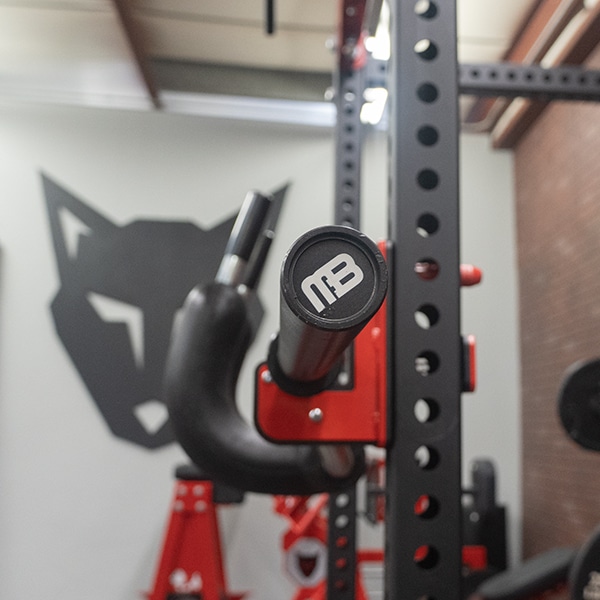
IF YOU COULD GO BACK IN TIME TO YOUR PAST SELF OF WHEN YOU DESIGNED THE ORIGINAL MARRS-BAR PROTOTYPE, WHAT ADVICE WOULD YOU GIVE YOURSELF AND WOULD YOU CHANGE THE DESIGN? The only real advice I would have given myself would be to have more confidence in what I had designed. At the time in 2003, my focus was my family (wife Jennifer, son TJ, newborn Madison … Zane and Morgan still to come), my two young businesses, etc of a young guy. I never thought larger than this bar will give me back my staple foundation lift – the low straight bar squat … and I was happy with that. Now that I have seen and heard how this bar has helped so many people, I feel regretful not presenting it to the world sooner. It is so melancholy not being able to enjoy your passion.
As far as the design, no. I would not have changed anything. Each solution I discovered, presented two additional obstacles or problems. I needed those obstacles and failures to achieve a better understanding of what the bar had to become.
HAVE YOU EVER DESIGNED ANY OTHER PIECES OF EQUIPMENT?
Yes. I have wanted to present them, but we have been in an uphill endeavor to get the Marrs-Bar manufacturing, shipping and distribution running at top speed to keep up with the increased demand. It appears we are about to have all the ducks in a row (knock on wood) and then some of these other ideas can come into play.
DID YOU TRY SSB’S BEFORE MAKING THE MARRS-BAR TO FIX THE PROBLEM YOU HAD? Yes. I explored every option in my gym once it was apparent my shoulders and wrists were no longer going to be able to support a straight bar any longer. I had overloaded the leg press, hack squat, smith machine and my SSB bar attempting to find similar results of the straight bar squats. Each apparatus did provide some growth … but they were all clearly a distant second place to the straight bar. I have never found another apparatus that resulted in such overwhelming strength and size as the straight bar squat … until I was forced through sheer desperation to create the Marrs-bar.
Regarding the SSB, I understand what the creator Jesse H. was going for and my hats off to him. For me anyway, the SSB had as many negatives as positives. I did not care for the SSB’s back pad to be set in such a high position – the physics of the SSB’s moment arm places the training load squarely on the user’s middle spine or in other words, the load places too much unnecessary stress and potential injury on the middle spine. I did not care for the uneven distribution of the weight during the exercise which forces the user forward and causes the user to alter their squat form. I understand that there are those that will defend the SSB to the end, but it seemed to me that the SSB offered mediocre results while forcing the user to train around the SSB’s deficiencies.
Our manufacture, when we began, called the Marrs-Bar a “manufacturing nightmare”. The SSB is pretty much all straight pipe, simpler and cheaper to manufacture and sell. The SSB can be produced cheaper and has a higher sell margin for the distributors. The Marrs-Bar is fairly expensive to manufacture and the sell margin is not as high as some distributors would like.
As far as the design, no. I would not have changed anything. Each solution I discovered, presented two additional obstacles or problems. I needed those obstacles and failures to achieve a better understanding of what the bar had to become.
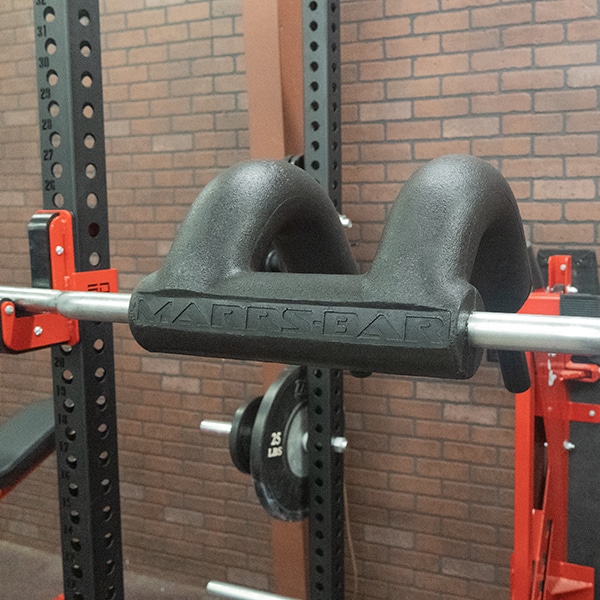
Prototype Questions
WHAT WAS THE BIGGEST CHALLENGE TO BRINGING THE MARRS-BAR TO MARKET, WAS IT MANUFACTURING OR CONVINCING PEOPLE THAT IT IS NOT JUST A SAFETY SQUAT BAR? All of the above, There were so many challenges. In the beginning, we were hoping to sell the idea to a big fitness company – but no one was interested. One fitness company said the handles were too long and they did not like the color. I interpreted that as their way of nicely slamming the door in my face.
We received some good advice from a patient holder. He said to approach number 3 or 4 in the fitness industry – not number 1 or 2. Number 1 and 2 have no reason to buy your bar except to bury it where no one will ever use it – why would they want to manufacture their own competition when their sales are already profitable. Number 3 and 4 are looking for an edge over 1 and 2.
Manufacturing a bar that has never existed presented so many obstacles, I am not sure there is enough space on the internet to go through them all. The battles that were fought to produce this bar were many.
Educating about a bar that has never existed has been as troublesome as the manufacturing. Especially in the beginning, everyone “knew” that this bar was an SSB. Only once they used the bar, did they immediately experience the many differences. I have spent 15 years improving on every aspect of this bar to improve my own results, never planning to market the Marrs-Bar for sale. I created this bar as a lifter who desperately wanted to remain competitive without being shut down by pain and injury … not as a fitness equipment manufacture looking to score inflated profits. It hurt a bit when people would degrade my bar without ever trying it – but it is a process.
HOW DID YOU GO ABOUT FINDING THE MANUFACTURER – SOLID BAR FITNESS? Like much of the Marrs-Bar adventure, Solid Bar was discovered by trial and error. I had originally assumed that locating someone to produce this bar would be fairly easy – it wasn’t. Every manufacturing business seemed to fit into two categories … either this job is too small potatoes for them to invest any time and/or resources or this job is too big and they do not have the proper equipment. I believe about November of 2018, Solid Bar invited us to visit. I thought we would be turned away once they saw the bar, but happily everything began to come together.
DID THE MARRS-BAR FIX YOUR PROBLEM? Yes. I originally was wanting to design a bar that would both remove the unavoidable collateral damage from my shoulders, elbows and wrists while allowing the full benefits of the straight bar low bar squats. I then pushed the design a bit further to remove the load stress from my fragile middle spine to my much stronger hip area – this was a bit more tricky. The shoulder harness and the actual bar had to be positioned to an angle where they balanced each other and allowed the load to travel in a neutral position (basically, straight down and then straight up – no more pitched forward SSB issues).
I discovered that this bar successfully allowed me to achieve straight bar results, while protecting my spine, providing more comfort and training options (front squats, good mornings, Hatfield Squats, lunges), reduced the training mental stress, my PRs increased, my back and knee pain vanished, I found the Marrs-Bar an easy training and teaching bar for novice squatters and it removed unnecessary collateral damage on my pecs, shoulders, wrists, elbows. I realized that this bar would allow me to train at an optimum level without forcing me to trade those results for crippling injuries and rehab down time.
My staff and gym members began to utilize this bar as well. Many of them joked with me that this bar has ruined squats for them if they left town, since no other gym on planet Earth had a Marrs-Bar.
Stories about the marrs bar
One of my favorite stories to represent this experience is the gentleman that produced the original body armor. He assumed that law enforcement agencies would be climbing over each other to purchase this noble new invention … not a peep. No one believed that this vest could protect officers. So, this inventor travels around the country, visiting law enforcement agencies and shooting himself in the chest (no officers would shoot him for fear of man slaughter charges) … and the rest is history.
A funny story: Donnie Thompson told me he saw us at the 2019 Arnold Expo (our Day One). He said he rolled his eyes and said there’s another BS squat bar, did not stop in to check out the bar and walked on. A few months later, Donnie was visiting Monty Sparkman – a strength coach in Texas. Monty had a Marrs-Bar and wanted to use it for the days training. Donnie (always the gentleman) did not want to be discourteous to his host and agreed. Donnie said by the second set, he knew he was out $600. Since those humble days, Donnie has been a great advocate for the Marrs-Bar and compared “training with the Marrs-Bar is like making love to a beautiful woman”. Donnie is colorful – Thank you, Donnie.
I’ll end on this note which sums up the safety aspect of the Marrs-Bar: Notre Dame Football Coach Lou Holtz said, “It’s not the load that breaks you down, it’s the way you carry it”.
Thank you,
Zac Marrs
Marrs-Bar

